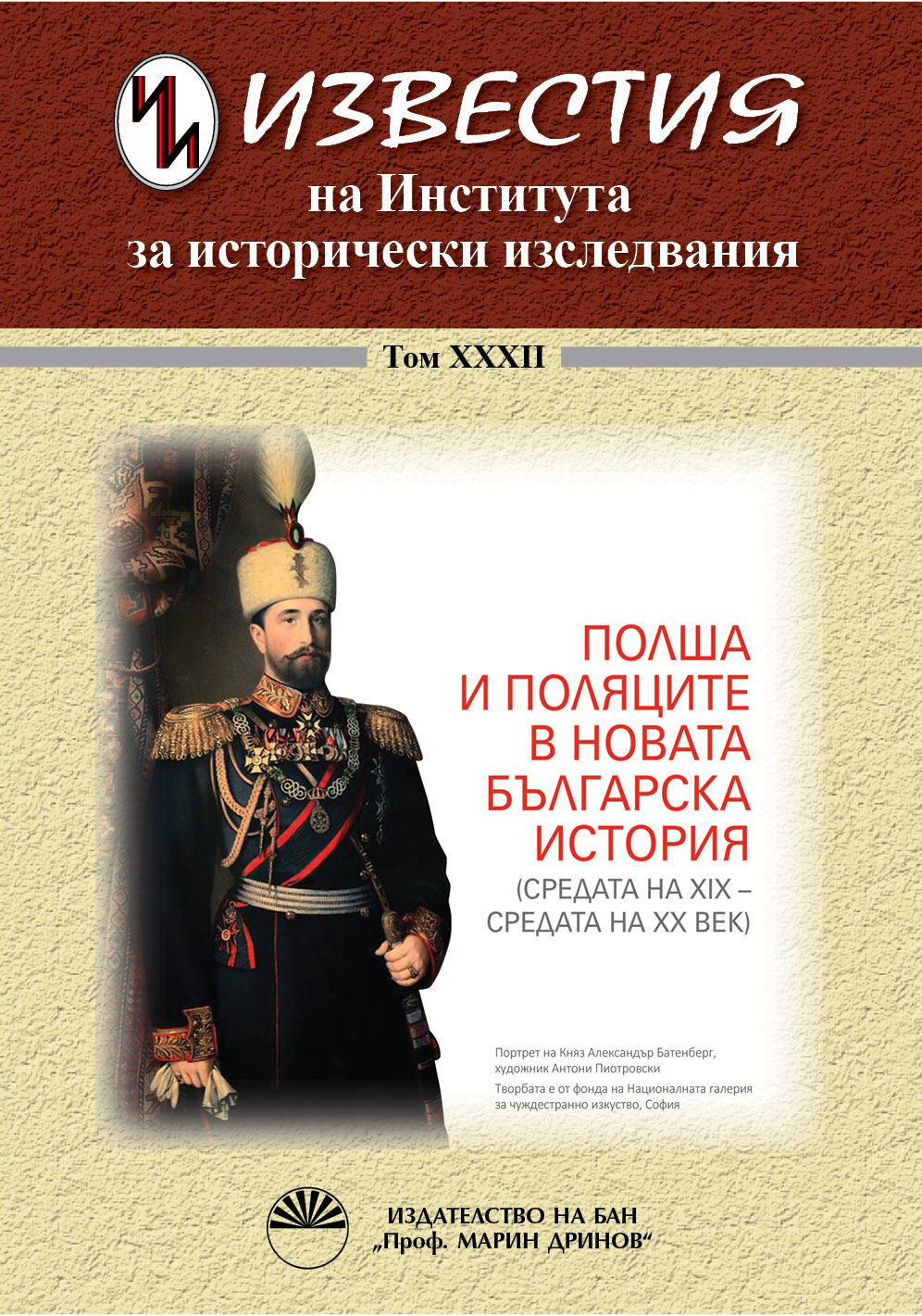България и Османската империя през първите десетилетия на ХХ век в карикатурите на Жорж д’Остоя (Йежи Сошчински)
Bulgaria and the Ottoman Empire in the First Decades of the 20th Century in the Cartoons of Georges d’Ostoya (Jerzy Soszynski)
Author(s): Stanislava StoytchevaSubject(s): History, Cultural history, Pre-WW I & WW I (1900 -1919), Between Berlin Congress and WW I
Published by: Институт за исторически изследвания - Българска академия на науките
Keywords: Bulgaria; Ottoman Empire; Jerzy Ostoja-Soszynski; Georges d’Ostoya; “La Caricature”; “L’Assiette au beurre”; Bulgarian national question; cartoons; independence of Bulgaria; Young Turk revolution; “Le
Summary/Abstract: The study is devoted to Georges d’Ostoya (Joseph Boleslaw Jerzy Ostoja-Soszynski) – former legionnaire in the French Foreign Legion, writer, translator of Russian classics, artist, antimilitarist and Polish patriot, part of the Polish emigrants in France. J. Ostoja-Soszynski is an artist who left his mark imposing his own literary and visual patterns. He is undoubtedly one of the greatest political poster artists and cartoonists in France at the time. This article is an attempt to update his biography and also an overview of his work as a translator and military historian. With regards to his cartoons in the French humorous press, the paper presents an overview and basic inventory of his cartoons in over 20 magazines published in Paris in 1899-1928. The study focuses precisely on this group with an accent to the magazines “Le Rire”, “La Caricature” and “L’Assiette au beurre”, where he mainly releases until 1912. Special attention is paid to his cartoons in the Turkish magazine “Kalem” issued in Istanbul during the Young Turk revolution. On this basis, the paper presents the views of George d’Ostoya for Bulgaria, the Ottoman Empire and the Bulgarian national question until the Balkan Wars (1912-1913). The analysis shows that George d’Ostoya demonstrates a serious interest in the Balkans and the fates of the Balkan peoples. The focus of his cartoons is placed on the views of the “great powers” on the Balkans, on the experience of the Balkan countries to implement national policies and territorial claims in respect of European Turkey, and on the political situation in the Ottoman Empire. Within the latter, a serious attention is paid to the fate of the Macedonian Bulgarians, and the independence of Bulgaria. Quite a few of these cartoons became emblematic.
Journal: Известия на Института за исторически изследвания
- Issue Year: 32/2015
- Issue No: 1
- Page Range: 343-373
- Page Count: 31
- Language: Bulgarian
- Content File-PDF

